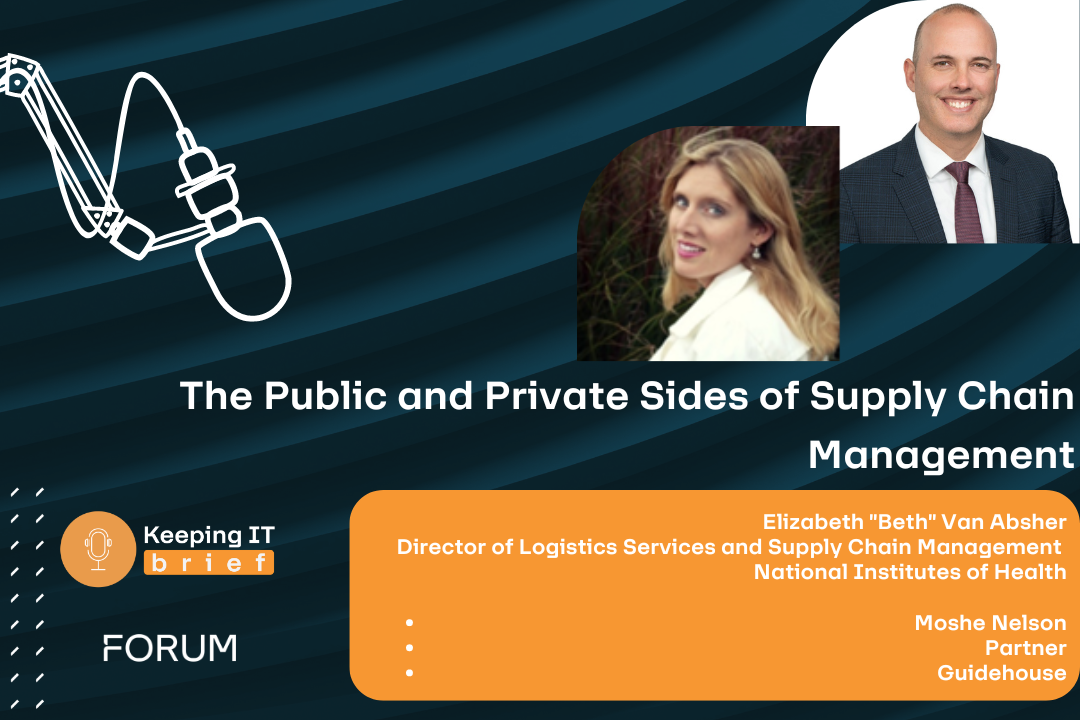This article by VMware discusses why IT modernization needs to be accompanied by organizational and process changes; how current efforts can achieve better mission outcomes; and how software factories may be the answer for Federal health.
Technology as the Key to Modernization…not Necessarily!
Common agency IT modernization goals include application portfolio modernization, cloud migration, network and infrastructure modernization, leveraging machine learning (ML) and artificial intelligence (AI) technologies, reducing CAPEX/OPEX through common modernized services, and implementing operational constructs like DevSecOps or Zero Trust. The stumbling block for most Federal agency IT modernization efforts is not in harnessing these new technologies, it is putting too much emphasis on implementing them!
The real key to successful agency digital transformation is achieving organizational culture, competency and process transformation requisite of utilizing modern technologies to achieve better mission outcomes. Federal acquisition practices are typically marked by system development processes that employ deterministic program requirements and plans, layers of serialized process rigor, compliance and decision-making; all implemented in the name of risk management aimed at programmatic success and ingrained into the very fiber of the workforce. Yet, “this risk adverse and serialized process-bound culture actually has the opposite effect. In the modern software, IT and cybersecurity environment there is perpetual ambiguity and change to keep pace with; the time those serialized risk mitigations require is the enemy and the process itself actually adds risk,” said Jeremiah Sanders, VMware’s Federal Strategist. “As an Air Force program manager, I thought the secret of agile software development was in some new way of coding, but becoming agile meant we had to change every facet of our acquisition development process and address acquisition functional stakeholder equities in a completely new way,” he added.
The Software Factory May be the Key
A great real world Federal example of this monumental transformation in the Federal Government is Kessel Run, a ‘software startup’ inside the Air Force that Sanders co-founded to tackle acquisitions a new way. In the summer of 2017, the $430M Air Operations Center (AOC) modernization effort was in its tenth year, with a staff of over 300 Government and defense industrial partners doggedly driving to deliver a much-needed upgrade. Yet, beholden to DOD acquisition processes, the team had not delivered a single line of code and reported to Congress they needed yet another $300M and three more years to deliver.
Three years later, after scrapping the 10-year program, the AOC program office had rebirthed itself into Kessel Run, which looks and feels more like a software company than a Government acquisition organization. Still, Kessel Run became much more mission relevant and is indeed a hybrid acquisition/operational unit continuously delivering war-winning software to over 7,000 users on classified networks worldwide. “Kessel Run operates a multi-region cloud-based infrastructure and application platform environment, enabling over 1,000 software developers and distributed operational resilience for over 75 modern mission applications that have achieved 80+% operational efficiency gains, saved over $500M and 100K+ manhours, all while achieving a software deployment frequency of 4.5 hours and operational availability on par with commercial ‘as a service’ providers,” says Sanders, who retired as Kessel Run’s Deputy Commander in 2020.
Perhaps more impressive is that Kessel Run is not a one-off. “Using a mitosis model of scaling transformation we learned from Eric Reis, author of The Startup Way, and growing the 24 attributes of high performing IT organizations we learned from DevOps Research and Assessment (DORA) researchers and authors of Accelerate, (Forsgren, Humble and Kim), several former Kessel Runners moved on to other parts of the DOD, partnered with visionary leaders and the same VMware Tanzu Labs teammates that enabled Kessel Run, leveraged Kessel Run’s elastic worldwide platform, and replicated the ‘software factory’ organizational model and game-changing mission outcomes at places like the Space Force’s Kobayashi Maru Section 31,” Sanders added.
Continuous Delivery is Transformative for Government and Industry
Senior leaders in the Air Force latched onto the ‘Software Factory’ moniker to describe Kessel Run, and, perhaps unfortunately, the term stuck. In its simplest form, ‘factory’ implies a place with tooling to create products that get shipped out to customers. “This simplicity belies the complexities of building a high performing IT/software organization that employs cloud-based technologies, entrepreneurial management practices, architecture and design patterns like micro-services and user-centered design, and modern software practices like DevSecOps that enable Continuous Delivery of mission critical capabilities,” says Sanders. In other words, a software factory is an organization that harnesses people, processes and technology to build the capacity and competency to continuously build, run, manage, connect and protect valuable mission capabilities in the face of dynamism.
“It is this inherent organic capacity to use modern technologies to continuously operate through dynamism that is so transformative relative to legacy Federal IT programs,” Sanders said. However, the tendency to focus on technology alone is hampering Federal digital transformation. Industry is best suited to solve the technology aspect and enable better software organization outcomes, while change agents should put their focus on people and process transformation. Fortunately, there are industry partners that can help with these people and processes enablement aspects too.
The Role of Technology Providers
“The journey to the cloud and a suite of modern mission applications is a long one, as agencies struggle to maintain operations and deliver services with a combination of technical-debt-laden legacy systems alongside modern cloud-enabled ones. This brings the complexities of parallel infrastructure stacks, hybrid and/or multi-cloud architectures, disparate IT operations models, and untenable cyberattack surface proliferation. Not to mention the additional investment overhead, training, manpower and organizational change management complexities seen during this transitional phase,” says Sanders.
By implementing a holistic set of differentiated technologies and services, industry can support Federal agencies, lowering cost and propelling agency modernization efforts:
- Enables modern software organizations with the cultural, management practice and technical competencies needed to build and scale high-performing IT and software teams with laser focus on delivering mission value
- Simplifies operational complexity through seamless abstraction, orchestration and parallel operations of legacy, cloud-native, and containerized applications in a highly automated and tailorable application development and operations platform
- Provides seamless end-to-end hybrid/multi-cloud management from a single pane of glass, providing fine-grained control and portability across public clouds, regional ops/data centers, and the tactical edge/end-user device environments
- Protects critical assets with end-to-end, Zero Trust-enabling security capabilities, which are integral to a cloud-based architecture and proven to reduce complexity in enterprise security operations
- Delivers digital workforce security and productivity with a best-in-class end-user digital workspace experience
The ‘Software Factory’ Organizational Model for Federal Health
There is huge applicability for the software factory concept in Federal health where both application modernization and creating new capabilities have been central focus areas. Federal health agencies have been at work already in this space, establishing agile based IDIQ contracts, expanding the US Digital Services footprint, and considering new transformation efforts such as the DHA’s WorkForce 3.0, VA’s CEDAR, CMS DASH, and other IDIQ contracts. Even in the more technologically advanced Federal health agencies, the organizations are still evolving to support a wider adoption and implementation at scale. “The VA has made remarkable strides from the 16 Major Initiatives concept 10 years ago where there were a lot of siloed efforts to consuming more enterprise services, USDS engagement, and organizational changes to support DevSecOps. The next phase for the VA will be to build upon those successes and scale across the Department to accelerate their transformation,” says Rob Sherry, Senior Director for Federal Healthcare.”
The beauty of Kessel Run and other DOD examples cited is the scale and organizational changes that are sustaining the longer-term ability for continued success. These foundations are set and are how they are accelerating the mission impact of more capabilities introduced more often into the field. The next phase of the Federal health digital transformation will be to build upon the great work already done within and for agencies earlier in their journey, to look at what is working and build upon the foundations that other agencies have demonstrated success with. The software factory, at scale, represents a great opportunity for Federal health modernization. “The DHMS PEO WorkForce 3.0 is a great example of how Government is looking to completely transform their organization to enable mission delivery and they have done a great job of outlining how they intend to work with industry to enable that transformation,” Sherry says.
There is also real opportunity for Government/industry collaboration, both in operating the software factory and for establishing a path to optimization and scale. Federal health agencies are expecting industry partners to help drive this innovation; especially where contractors play a large role in modern application development. “The market is changing, for tech companies, small SIs, or large SIs. The most valued companies will be those that help agencies deliver on customer experience and field useability; the software factory concept works to enhance that experience.” Collaboration between Government, technology partners, and the SI ecosystem has been crucial to DOD’s success and in that environment where you have very established defense industry companies, change is no always easy. The Fed Health SI landscape is very diverse and quite different from the DOD landscape, but the need for collaboration and different ways of approaching application delivery are just as critical to effectively partner with the agencies to serve the country.
About Jeremiah Sanders
 Jeremiah Sanders is a Navy and Air Force veteran, DOD-certified Executive Program Manager (PMP/PgMP-equivalent) with Top Secret/SCI clearance, and joined VMware after co-founding the D)D’s premiere software startup, Kessel Run, and growing it to 1,300 members while serving as the Deputy Commander, AFLCMC Detachment 12. His diverse background includes Joint, operational, and Navy nuclear power plant engineering, maintenance and operations coupled with PM experience in all acquisition phases; particularly IT, software intensive systems, C4ISR, and satellite development and sustainment.
Jeremiah Sanders is a Navy and Air Force veteran, DOD-certified Executive Program Manager (PMP/PgMP-equivalent) with Top Secret/SCI clearance, and joined VMware after co-founding the D)D’s premiere software startup, Kessel Run, and growing it to 1,300 members while serving as the Deputy Commander, AFLCMC Detachment 12. His diverse background includes Joint, operational, and Navy nuclear power plant engineering, maintenance and operations coupled with PM experience in all acquisition phases; particularly IT, software intensive systems, C4ISR, and satellite development and sustainment.
About Rob Sherry
 Rob Sherry is the Senior Director for the VMware Federal Healthcare Team and has been supporting the respective Fed Health missions for the last 20 years in the IT Transformational areas of modern application development, multi-cloud operations and design, and Infrastructure Modernization.
Rob Sherry is the Senior Director for the VMware Federal Healthcare Team and has been supporting the respective Fed Health missions for the last 20 years in the IT Transformational areas of modern application development, multi-cloud operations and design, and Infrastructure Modernization.
About VMware
VMware Government Solutions provide the digital foundation for the evolution and transformation of government IT, enabling agencies to improve mission outcomes and meet constituent expectations for modern, efficient and cost effective services. VMware’s interoperable cloud, app, networking, security and workspace solutions form a flexible digital foundation that enhances mission delivery, ensures continuity of operations and resiliency, and improves citizen and employee experiences while safeguarding data.












